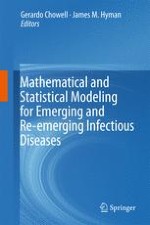2016 | OriginalPaper | Chapter
The 1997 Measles Outbreak in Metropolitan São Paulo, Brazil: Strategic Implications of Increasing Urbanization
Authors : José Cassio de Moraes, Maria Claudia Corrêa Camargo, Maria Lúcia Rocha de Mello, Bradley S. Hersh, John W. Glasser
Published in: Mathematical and Statistical Modeling for Emerging and Re-emerging Infectious Diseases
Publisher: Springer International Publishing
Activate our intelligent search to find suitable subject content or patents.
Select sections of text to find matching patents with Artificial Intelligence. powered by
Select sections of text to find additional relevant content using AI-assisted search. powered by
